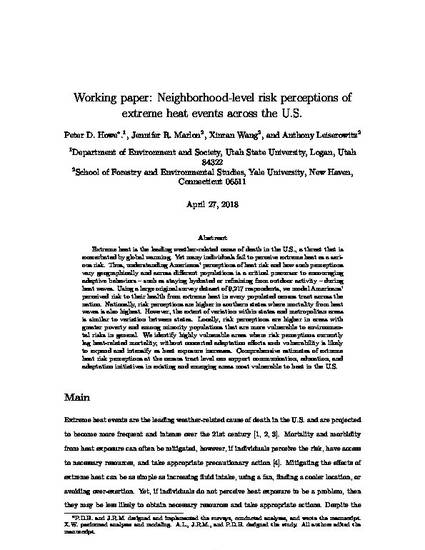
Unpublished Paper
Working paper: Neighborhood-level risk perceptions of extreme heat events across the U.S.
(2018)
Abstract
Extreme heat is the leading weather-related cause of death in the U.S., a threat that is exacerbated by global warming. Yet many individuals fail to perceive extreme heat as a seri- ous risk. Thus, understanding Americans’ perceptions of heat risk and how such perceptions vary geographically and across different populations is a critical precursor to encouraging adaptive behaviors – such as staying hydrated or refraining from outdoor activity – during heat waves. Using a large original survey dataset of 9,217 respondents, we model Americans’ perceived risk to their health from extreme heat in every populated census tract across the nation. Nationally, risk perceptions are higher in southern states where mortality from heat waves is also highest. However, the extent of variation within states and metropolitan areas is similar to variation between states. Locally, risk perceptions are higher in areas with greater poverty and among minority populations that are more vulnerable to environmen- tal risks in general. We identify highly vulnerable areas where risk perceptions currently lag heat-related mortality; without concerted adaptation efforts such vulnerability is likely to expand and intensify as heat exposure increases. Comprehensive estimates of extreme heat risk perceptions at the census tract level can support communication, education, and
Disciplines
Publication Date
2018
Citation Information
Peter D Howe. "Working paper: Neighborhood-level risk perceptions of extreme heat events across the U.S." (2018) Available at: http://works.bepress.com/peter_howe/75/
